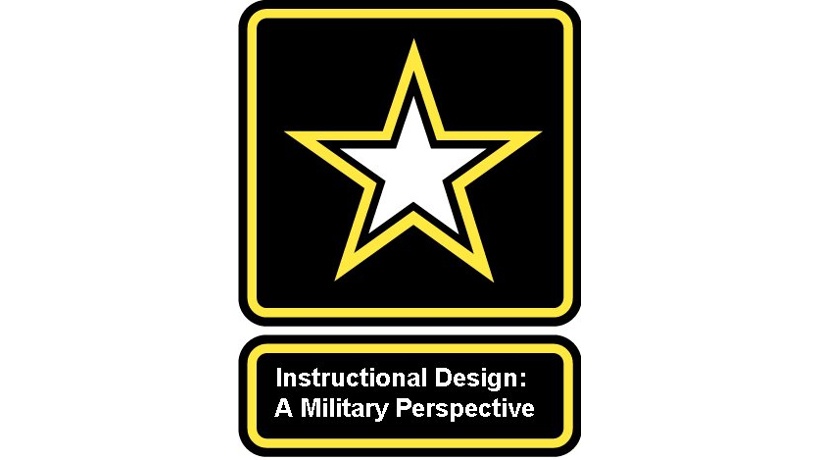The Future Of eLearning For Veterans
Nowadays, veterans are turning to eLearning to acquire new skills and maintain their competitiveness in the job market as they transition from military duty to civilian life. This is the result of the rising costs of higher education and the increased demand for skilled labor. From interactive learning platforms and personalized content delivery to gamified learning experiences, veterans can utilize the latest technologies to improve their educational outcomes, while taking advantage of the added flexibility of online education. Modern eLearning methods have opened up new opportunities for veteran learners to stay connected with their peers and continue learning new skills as technology advances [1]. This article will cover the most popular eLearning trends, from learning experiences tailored to each veteran’s needs to Virtual Reality (VR)-based applications.
What Is eLearning And Why Is it Important For Veterans?
eLearning combines technology, content, and media to provide an engaging experience for learners. It enables learners to access the materials they need anywhere, anytime, on any device. For veterans, eLearning can provide invaluable opportunities to stay current with their career field or transition into a new one. eLearning offers veterans the convenience of studying from home without having to commute or take time out of their day. This can provide financial benefits for disabled veterans or those with other limitations that make attending traditional classrooms difficult.
How To Make eLearning Accessible And Accommodating For Veterans
Veterans deserve an environment that empowers them to participate fully in their learning. This means exploring ways to provide them with equal access to the same educational content as non-veterans, including:
- Creating content with clear language, visuals, and video tutorials, especially for those with disabilities, such as vision impairment or hearing loss.
- Establishing a supportive and comfortable learning environment to improve veterans’ engagement with the material and their overall success in completing the course.
- Providing tools that make learning easier, such as assistive and voice-activated technologies.
- Offering flexible scheduling options since many veterans have jobs or other obligations that may conflict with set class times.
Pros And Cons Of Assistive Technology For eLearning
Pros Of Assistive Technology
- Accommodates the individual needs of each learner, as educators can make sure all veterans have equal access to educational materials, no matter their physical or cognitive disabilities
- Promotes engagement and motivation, allowing for improved communication and collaboration among learners
- Improves efficiency in delivering course material through alternative ways of accessing information and learning content, including audio, visual, and tactile aids
Cons Of Assistive Technology
- Potential privacy and security issues due to storing and sharing personal information [2]
- Technical issues, such as hardware malfunction or software incompatibility, might affect the quality of the learning experience
The Benefits Of Closed Captioning And Transcripts For eLearning
Closed captioning and transcripts are essential accessibility tools for eLearning courses, especially for veterans with hearing impairments, as they offer a range of benefits that can enhance the learning experience and meet their individual needs.
How Voice-Activated Technology Can Enhance eLearning Accessibility
Voice-activated technology makes it easier for learners to interact with and navigate eLearning platforms. Users can access course material and engage with content using voice commands rather than manually typing queries into search bars or open menus. Voice-activated technology provides hands-free navigation, text-to-speech capability, and personalized learning. Additionally, this technology provides interactive elements such as virtual assistants, which provide real-time feedback.
Gamification: Turning eLearning Into A Game For Veterans
Gamification is a popular approach to eLearning that applies gaming elements and game mechanics to online courses to enhance learner engagement and motivation [3]. It involves incorporating game-like features into the learning experience, such as points, badges, levels, leaderboards, and virtual rewards, to encourage learners to take on new challenges.
Pros And Cons Of Gamification In eLearning For Veterans
Pros Of Gamification In eLearning For Veterans
- Improve knowledge retention by allowing learners to practice their skills in an entertaining environment [4]
- Increase motivation and productivity through rewards and recognition in exchange for learning achievements [5]
- Reduce boredom by instilling a sense of accomplishment that boosts veterans’ morale.
Cons Of Gamification In eLearning For Veterans
- Lack of control over the learning process
Veterans may be unable to tailor the experience and customize it to their needs, making it difficult for them to make progress - Lack of social interaction
Veterans often need an engaging environment where they can interact with their peers and instructors, which is not possible with eLearning platforms that rely heavily on gamification
Mobile Learning: How Can It Help Veterans Learn On The Go?
Mobile learning allows learners to access educational materials on the go, anytime, anywhere. As such, veterans can access the content through smartphones, tablets, laptops, or any other device with internet access, allowing them to reach educational content at their own pace and convenience while still receiving the same quality of instruction typical in a traditional classroom setting.
Pros And Cons Of Mobile Learning For Veterans
Pros Of Mobile Learning For Veterans
- Access to a variety of resources and opportunities compared to traditional classroom learning
- Veterans can easily search for courses that are tailored to their specific needs and interests
- Access to real-time support from experts in the field, which can help veterans obtain the answers they need quickly and accurately
- Staying connected with peers and mentors, which is essential for staying motivated
Cons Of Mobile Learning For Veterans
- Lack of technical support and accessibility, as it can be difficult for veterans to get quick help when they need software updates or encounter technical issues
- Difficulty in tracking progress due to a lack of structure, which can minimize motivation and opportunities for feedback and guidance from teachers or mentors
- Potential privacy concerns, for example, if a veteran’s phone or device is lost or stolen, any personal or sensitive data that was stored on it could be accessed by someone else
Microlearning: Bite-Sized eLearning For Veterans
Microlearning is a bite-sized form of eLearning that utilizes short, focused lessons designed to be easily digestible and immediately applicable, allowing learners to absorb and apply what they have learned quickly. This makes microlearning an effective tool for delivering bite-sized chunks of training for maximum knowledge retention.
Pros And Cons Of Microlearning For Veterans
Pros Of Microlearning For Veterans
- Cost-effective, as it allows veterans to access high-quality content without the need for expensive equipment or materials
- Microlearning can be used by individuals or groups, making it highly efficient for learning on any scale
- Well-structured, since microlearning modules are designed in such a way that makes them easy to understand for veterans who lack experience in educational settings
Cons Of Microlearning For Veterans
- Veterans may find it challenging to learn from microlearning as some might be accustomed to traditional classroom settings or comprehensive courses where they can fully absorb information
- Veterans often have unique learning styles or needs, which this learning modality can’t always address
- Microlearning offers a different level of interaction with instructors or peers than traditional methods do. Hence, veterans may find it more difficult to understand and apply learned concepts and skills compared to more traditional learning settings
Virtual Reality And Augmented Reality: How Can They Enhance Veterans’ Learning Experience?
Virtual Reality and Augmented Reality (AR) are powerful technologies offering users immersive experiences. While AR and VR differ in their approach, both have the potential to enhance education and training in various fields. Regarding AR and VR in educational settings, VR can transport veterans into virtual spaces with realistic visuals, sounds, and other sensory experiences. On the other hand, AR can supplement veterans’ physical learning environments with digital content such as simulations, animations, or interactive objects.
Pros And Cons Of VR And AR In eLearning For Veterans
Pros Of VR And AR In eLearning For Veterans
- Veterans practice their skills without having to worry about the consequences of making a mistake in a real-world setting
- Provide veterans with a more personalized learning experience, as they can adjust the difficulty level of tasks based on their individual needs
- Offer an engaging learning style for veterans to understand new concepts, as they are immersed in highly engaging environments
Cons Of VR And AR In eLearning For Veterans
- The cost of hardware and software required to operate AR or VR can be quite expensive, limiting veterans’ access to these technologies
- Potential safety issues such as dizziness, nausea, and eye strain if not used correctly
- Veterans may need specialized training to use the equipment properly, which can be difficult to obtain in some cases
Recap
eLearning is fast becoming an essential part of educational growth in the military. With trends like Virtual Reality and Augmented Reality, mobile learning, microlearning, and many others, veteran learners have gained a greater understanding of their subjects, which has helped them develop valuable skills that can be applied in various sectors. As the demand for developing new skillsets among veterans grows, we can expect more innovative technologies in the near future that will help them acquire new skills quickly and efficiently as they reenter civilian life.
References:
[1] 10 Steps To Learn New Skills (With Tips)
[2] Tips And Tools For Student Privacy When Using Educational Technology
[3] Gamification In EdTech: The Future Of Innovative Learning
[4] A Playful Game Changer: Fostering Student Retention in Online Education with Social Gamification









